We tend to think that what we see is what we get, and also what we’ll get in the future. Nature will always be there—it can just grow back. But it depends on what we want to grow back. In fact, urban ecological communities may be accumulating a large amount of “extinction debt”—a debt that will eventually be paid in species lost from the urban landscape.
Despite the obvious oversimplification of this opening statement, research has unequivocally indicated that there is trouble in paradise. Seemingly healthy and lush fragmented natural areas in urban environments may be slowly or quickly dying, not to mention those cleared in the name of development. However, there is also a poetic justice to our opening salvo: we all see the resource exploitation, unplanned cities, corrupt governments, slums, to name but a few; and as a result, we really are seeing what we get when we don’t responsibly manage the earth.
Incidentally, thinking about the opening statement, one can also look at it this way:
“What we do see depends mainly on what we look for. When we turn our eyes to the sky, it is in most cases merely to see whether it is likely to rain. In the same field, the farmer will notice the crop, geologists the fossils, botanists the flowers, artists the colouring, sportsmen the cover for game. Though we may all look at the same things, it does not at all follow that we should see them.”
—Sir John Lubbock from “The Beauties of Nature and the Wonders of the World We Live In”
Though we may all live in cities, we see things differently. Nature conservationists despair for the loss of green space and native species together with the increase in exotic species; developers and economist see urban expansion opportunities in open land; and some people merely appreciate any green, whilst others see firewood, medicinal plants, or saleable natural resources they can use to survive.
Moreover, in the words of Don Miguel Ruiz, “We only see what we want to see; we only hear what we want to hear. Our belief system is just like a mirror that only shows us what we believe.” This statement is poignantly reflected by politicians and activists of our day. Putting all these in context with urban environments, we realize that things that are obvious to some people will not be perceived as obvious by others.
This brings us to a paradox for contemporary urban nature conservation: should we be fighting for the preservation of any and all green as valuable green infrastructure, or should we be prioritizing native species in natural remnants and restoration of native plant communities, which is often costly and disapproved of by local residents?
If we opt to prioritize native species conservation, our research (du Toit et al 2016) and that of others (Hahs et al 2009; Dullinger et al 2013), has shown that traditional management practices that do not incorporate potential legacy effects—“the impacts that previous conditions have on current processes or properties” (Monger et al 2015)—is not enough. In other words, what we see now is NOT what we will always have.
McDonnell and Hahs stated that in “creating biodiversity-friendly cities”, two ideologies are in play; namely, managing for the conservation of indigenous species and managing to benefit people. The authors feel both should be considered and maintained in balance to ensure that people and biodiversity benefit. This balance can be delicate, as illustrated by a comment by Donovan Gillman on Divya Gopal’s post, “The Myth of Alien Species: an Alternate Perspective on Wild”. Gillman wrote that, in relation to the removal of exotic pine forests in Cape Town, “the position that many of us have is that it is preferable to have the large exotic trees and shrubs in the urban environment for their social, aesthetic and habitat benefits for urban birds and other wildlife, than to revert to the natural vegetation of the place…that cannot be recreated in a viable dimension within the fragmented urban fabric…”
Chris Ives asked an important and related question: “how can we navigate the differences between the perceived conservation importance of [threatened] species compared to the often-indifferent perspective of the general public and stakeholders?” He emphasized that the global importance of species protection should be made relevant at the local level and that citizens should be actively engaged in conservation actions. Moreover, in pondering the reason why we should protect indigenous species in our cities, he said that we should explore “the ethical principles that ought to govern cities”, which provide parameters in response to the question, “what kind of actions are consistent with a respectful relationship towards nature?”
Cities potentially carry large “extinction debts” (Hahs et al 2009; Dullinger et al 2013; du Toit et al 2016; see also McDonnell and Hahs). The premise behind the studies is that plants and animals exhibit time lags (delayed reactions) in their response to disturbances. If disturbances such as fragmentation are severe enough, species face local extinction—but only after an interval of time, thus producing an extinction debt.
In our research in Potchefstroom, South Africa, we studied urban remnant natural grassland dynamics. We returned to sites in 2012 that were surveyed in 1995-1996 in woody and open grassland communities (Fig 1). The woody communities are found on small hills and ridges in the area and are dominated by trees and shrubs. We correlated the vegetation patterns of the two sampling periods with six landscape measures to test for time lags and to find out which of the measures are relevant in explaining the observed vegetation patterns. The landscape measures (Table 1) were calculated for several periods digitized from aerial photographs and satellite images of the area.
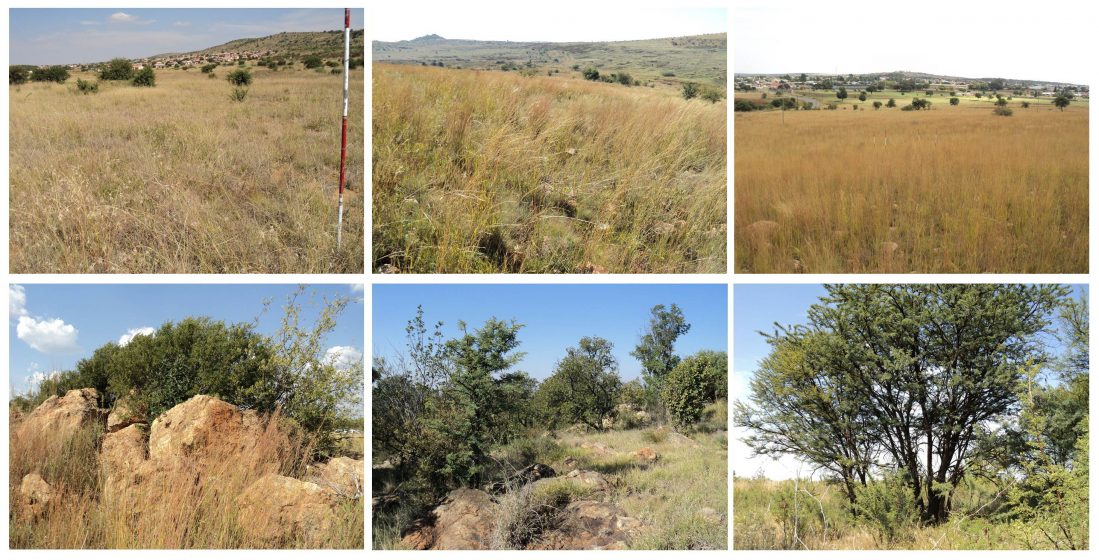
We found that open grassland and woody grassland communities reacted differently to anthropogenic disturbances. The indigenous species richness of the woody communities showed average time lags of 21 years (i.e. the observed patterns correlated best to landscape measures representing landscapes of 21 years earlier), whereas the open grassland indigenous species patterns were best predicted by contemporary landscapes (interpreted as 1 year or no time lags between the disturbance event and potential community changes). Additionally, we tested for “disturbance species’” richness patterns to see if they showed different responses. The species we termed “disturbance species” are those that flourish in conditions of trampling and overgrazing, bush encroachers, pioneer species, weeds, and invaders identified from the literature of the area. The disturbance species had consistently longer time lags than the indigenous species in each of the habitats; therefore, they could act as warning signs to indicate that potentially significant changes have already occurred. Moreover, despite major intensification of urbanization between the sampling periods, the time lags of all the vegetation patterns remained relatively constant. Therefore, it seems that species do not react faster when disturbances intensify.
Regarding the measures, we found that the statistical significance and, for one measure, the relationships (positive or negative), changed between the different periods. For instance, in 1995, the “percentage natural areas” metric was important in explaining the variance in the generalized linear model (or GLM), but in the 2012 model, it was not (Table 1). This has thought provoking implications for studies which only test the relevance of measures for a single period. For instance, in a study “percentage natural area” might not have been important at the time the study was conducted, but might be important again if the study was repeated at a later stage as indicated in our study. Therefore, this must also be considered when choosing measures for a new study based on the findings of others. Moreover, in our study, we also found that relationships between measures and species richness that seemed intuitively “wrong” could be explained by site-specific factors, which emphasizes the importance of explicitly considering such factors in interpreting data.
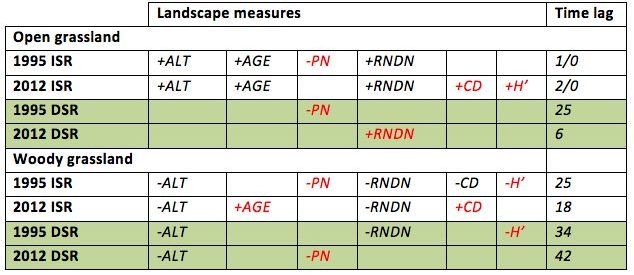
Our analysis of the vegetation composition indicated that the species with the highest declines were indigenous herbaceous species (Fig 2). Therefore, these species are most at risk. The 24 species lost between the two sampling periods and not recorded again or in any other recent study were all rare species in 1995, indicating potential local extinction. Moreover, the proportion of species recorded that were “rare”, meaning they occurred in only one site and/or habitat, increased from 20 percent in 1995 to 24 percent in open grasslands and 22 percent in woody grasslands in 2012, which can be regarded as another extinction debt signature (Hanski and Ovaskainen 2002).
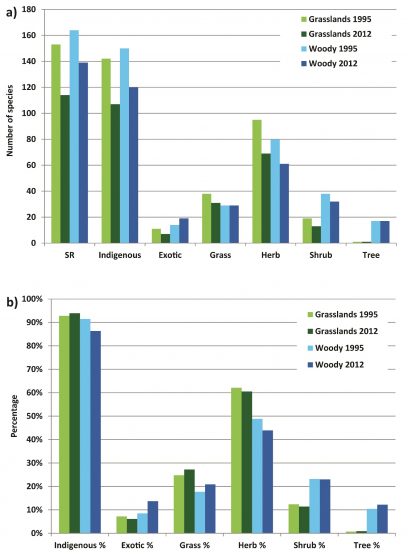
Why are these results important? Helm et al 2006 remind us that “conservation agencies must take the extinction debt seriously in their planning”. We cannot simply preserve remnant vegetation patches; some sites may already require active management approaches such as habitat restoration or facilitation of seed dispersal (Helm et al 2006; Gustavsson et al 2007). McDonnell and Hahs also suggest specific urban management actions to preserve native species. Site-specific drivers of vegetation change that are influenced by the history of the landscape need to be identified and managed (Pimm et al 2006, Hahs et al 2009) to avoid mitigations that target the wrong drivers (Dullinger et al 2013). Pressures on urban environments will only be intensified by climate change realities, so “the key message is that urgency to take action now is even greater than one might expect based on even the most up-to-date red data books” (Helm et al 2006).
Local surveys are essential and should be performed repeatedly to monitor vegetation change. Quantification of time lags in the response of vegetation to disturbances will allow researchers to determine the period between cause and effect—this knowledge will allow the opportunity to save extant species (Helm et al 2006, Hahs et al 2009). Moreover, this implies that current conservation efforts need to be intensified (Dullinger et al 2013) and potentially shift towards restoration actions. Conservationists must make sure that they account not only for new drivers of population declines but also for historic ones (Dullinger et al 2013).
However, much of our perceptions of nature are linked to the “extinction of experience” as eloquently discussed by Marianne Krasny. Have we forgotten what nature “ought to look like” and are our new “baselines” enough? In our efforts to conserve nature, should we opt to save “one that celebrates human’s caring for nature and communities” or, in an effort to preserve the remnants of what is still left of the “the other half that we need to keep alive”, ensure that the experiences of future generations can still be enriched by preserved pockets of remnant nature? Eric Sanderson takes an optimistic view on the role of people in the future preservation of nature by also seeing them as assets to the conservation cause. He believes that to engender change we need to put our efforts into something that can really make a difference—people. He argues that we can’t appeal to nature itself, but we can convince people to act in the best interests of nature and us all:
“I became an urban nature conservationist because I eventually realized that it is self-defeating for conservation to say that only nature far away and remote from view is valuable…When we say that only wild places matter, we limit our audience to the people that already believe…For conservation to sweep society…we have to say that nature everywhere matters and that every action in the human enterprise matters to nature.”
Sanderson’s point parallels Ted Trysna’s case for urban protected areas, in which he argues that “conservation depends on support from urban voters, urban donors, and urban communicators. In a rapidly urbanizing world, people tend to have less and less contact with nature. People will value nature only if they care about nature where they live.” After all, as illustrated by Glenn Stewart in New Zealand, “urban areas are as intrinsically interesting and diverse and worthy of conservation as the mountainous National Parks” and, as Jon Sullivan says, “our challenge now is to find ways to celebrate and care for, and use, the original biodiversity present in our cities (and farmland) rather than shunt it to the corners.”
Is urban nature conservation in peril? Looking behind the scenes of contemporary landscapes reveals cities that are potentially carrying large extinction debts, such that “future species loss may be expected even if the present landscape is maintained” (Lindborg and Eriksson 2004). However, really “seeing” contemporary landscapes also reveals the people that live in them and their opinions and perceptions. We, as citizens, will need to decide which future to strive for and which type of green space will demand our time, money, and admiration.
Marié du Toit and Sarel Cilliers
Potchefstroom, South Africa
about the writer
Sarel Cilliers
Sarel Cilliers is professor in Plant Ecology at the North-West University. His research focuses mainly on small urban and rural settlements.

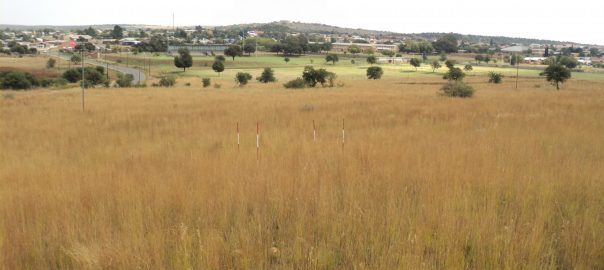






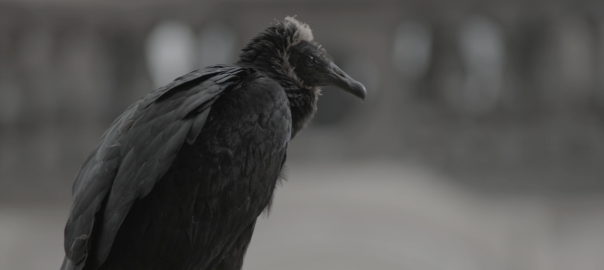
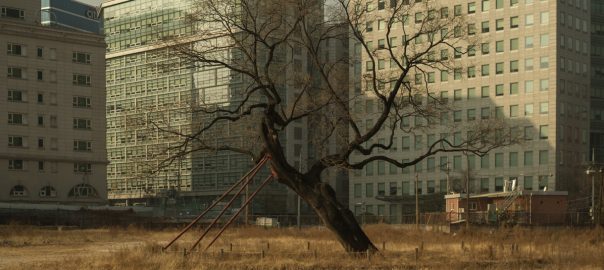
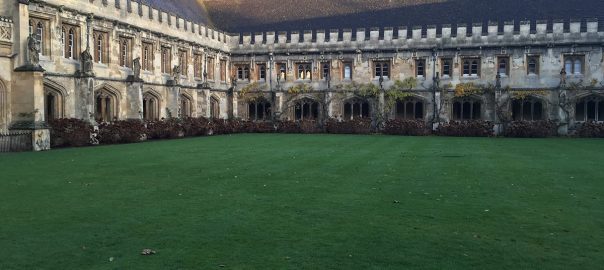
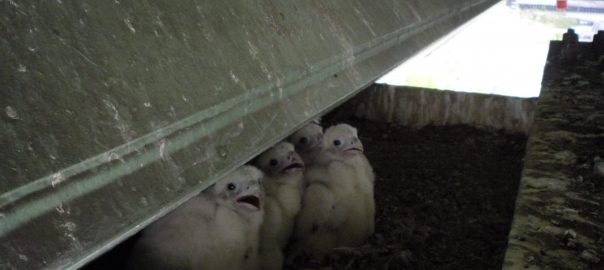
Loved the article guys. Time is a crucial element. Especially with long-lived trees. So what we might be preserving right now might seem OK BUT if there are no seedlings now to replace the forest giants then things might be OK for even a century or 2 but ultimately we will lose them. We need to incorporate a temporal as well as a spatial element in our planning.